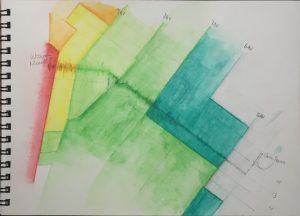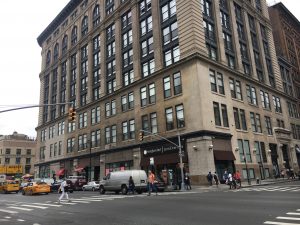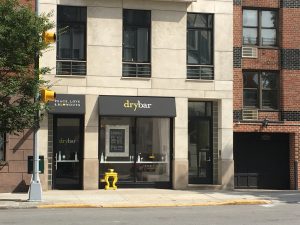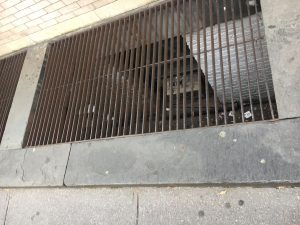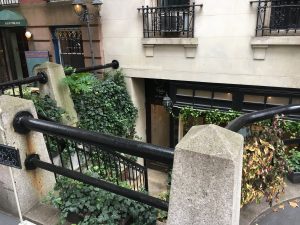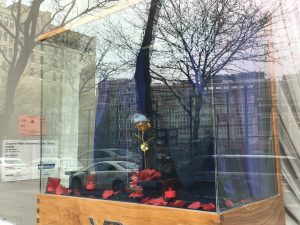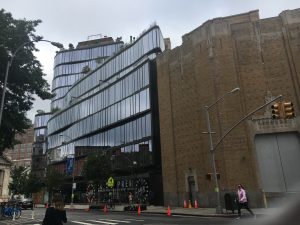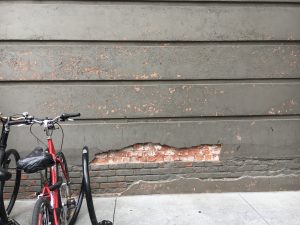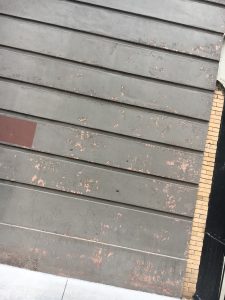Whitney Museum trip
Reflect on our trip to the Whitney Museum by answering the following questions on your LP:
– What did you think of the presentations? What did you find most interesting?
I think the information in the presentation is very thorough. However, I was a little bit sad about how NYC react to the hurricane. Maybe because I come from a Communist country, or maybe because I don’t know politics at all, I couldn’t 100% accept the way Whitney Museum defend from the hurricane/flood. I do think the system Whiney Museum has is really powerful. It protects the building and the artworks. On the other hand, I thought it would be more efficient if people also consider improving the drainage of water. It’s obvious that if a building stops the water, the water will change the direction and runs to other buildings. Therefore, it may be more helpful, if it is possible, to lead the water to the correct direction, instead of letting it go.
– Did the presentations and visit make you feel differently about living in New York? If so, how?
The visit let me learn the difficulty of construction in Manhattan. Although New York is the modernist city in the world, there are a lot of difficulties hidden beneath the surface. Because if the history, the high density of population, and the geography, any ordinary building in the city may have effort from the architects or designers.
– What does it feel like to go to an art museum, not see art, but to learn about this specialized environmental design instead? Do you think more people should know about these kinds of projects and designs?
To be honest, I am more interested to know this project than just see the art works. I think it is important for the visitors to know the building itself as well as the art works. Maybe the museum can open a gallery, or maybe just a small display room to show this project.
– Do you feel that the Whitney’s flood mitigation system and building design is as artful/creative as the works of art it protects upstairs in the galleries? Which kind of art and design would you rather create?
Not really. I think the flood mitigation is very practical and useful, but I don’t see any creative elements in it. Maybe I didn’t sense the creativity. I always heard people saying that art is not practical. I agree that comparing with the things we use in daily life, art may be more abstract. Therefore, I think the cooperation between practical designers and abstract art creators to work together. I have made the decision to major in fashion, which for the most times can be very creative but impractical, but garment itself is a really practical category.
– Did the visit change your idea of what creative and useful design might be in the age of climate change and the Anthropocene?
As the human society developed, we have more freedom to think about something besides being alive. At first, useful design are more attractive. Later on, the creative ones brought new color to the world. As for now, we’ve already entered an era that people value both creativity and usefulness of a design. I think the Whitney Museum is a good combination of both. I’ve visited the museum before, the diverse artworks always made me feel dizzy. Now I learn the flood mitigation system, I adore the museum more. An useful design doesn’t need to be very obvious that tells every its usefulness at the first glance. It can be implicit and interesting.
Zone Walk
1) Draw a map of your route, by hand, in your field notebook. Scan and upload this
map to your LP post.
2) Take a photo in each zone (min. 3 photos) and post them on your LP
3) Answer the following questions on your LP post:
– How does having an awareness of evacuation zones change the way you experience living in New York?
After I learn the evacuation zones, I feel more secure and insecure at the same time. Since I’ve known the border of each zone, I know where to go if the hurricane alert starts. Also I have a brief knowledge of the potential damage in the places around me. However, I feel a little bit anxious noticing how close each zone is. Although the school is at the edge of Zone 6, but Zone 5 is just two blocks away. Furthermore, this map is just a reference. When the hurricane comes, there won’t be a clear edge of the safe area and affected area.
– What areas appear to be vulnerable to storm surge, if any?
I fell like if the flood comes, all the basements will be in the water. There are iron gates on the ground almost everywhere. They are the entrance of basements. For restaurants and stores, basements are their storage. Once flood rushes into Manhattan, merchant will have a big loss.
Also, when flood comes, the objects on the street may float in the water and be washed into stores’ showcase. The entire piece of glass may be broken. Then there may be more loss and injury.
– Do any buildings/infrastructures look more prepared for the next storm — how?
This building (The City of New York) looks relatively secure, especially compared with the glass one next to it. The exterior is a complete flat stone-made wall like a castle. There is noting pointing out or inlayed glasses.
– Are any effects of Hurricane Sandy visible?
I’m not sure if Sandy causes this damage, since this wall is located in Zone 6, close to Zone 5. The outer layers of paint was peeled off that the bricks were revealed.
4) Choose one zone (1-6) as your focus. What is a design idea you have that would
communicate/show people what zone they inhabit? What kind of tool, device or signage
would you make? Include a list of 3-5 challenges you would face in implementing this
project in NYC (think about resiliency of materials, language issues, access to
information, visibility during different times of day or during storms, diversity of public
etc.).
I would design a row of LED lights and install them on the border of Zone 5 and Zone 6. For example, the 12th street between the Fifth Avenue and the Seventh Avenue is the border of Zone 6 and Zone 5. I will put a row of light green lights that represent Zone 5 on the wall that faces Zone 6. Vice versa. In that way, people will start being curious about these new lights. Then government should advertise these lights and introduce the Hurricane Zones to the public. I would need to customize the color of the LED lights and the battery that could last longer. The challenge of this project may be the maintenance of these lights, especially during the hurricane season. Also, the spread of the hurricane zone knowledge is very important. Hopefully these lights will catch people’s attention. Schools and public organizations should educate their students and employees first. Therefore, the information would be spread out to more people.
Microplastic
What kinds of systems are linked through plastics? Were you aware of how much plastic has entered various human and biological systems? What can designers do to help limit the amount of plastics contaminating environmental systems?
The Ocean system, circulatory system and tap water plant are all linked through plastics. I didn’t notice that even the atmospheric fallouts could bring microplastic particles. The next time I pour water into my cup, I would add a lid on it so that microplastic won’t contaminate my water too much.
For designers, it is very important to add the reminder on their design if the material could cause microplastic contamination. The reminder should tell people the harm of microplastic contamination and relates it every indivual’s health. In this way, more people will be aware of this. If possible, it would be more considerate to avoid or decrease using plastics in designers’ works. Plastic used to be the greatest invention in 20th century. However, people didn’t predict the waste it might create at that time. The pollution and health problems made by plastic and are irredeemable.
System Map Links:
https://prezi.com/p/fy3zowcwxalb/
